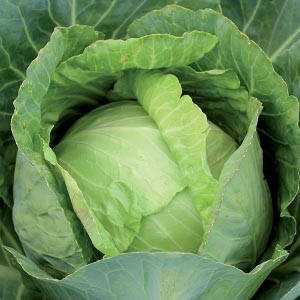I can’t help but stress the multiversal benefits of cruciferous veggies. But a post I recently found does an even better job than I could enumerating the good things about cabbage, in particular. And those go far beyond the basic nutritional benchmarks….
‘Hard’ factors…
Raw or cooked, cabbage is good for you. It’s chock-full of essential nutrients, and can be fermented to make it even more bio-beneficial.
Uniquely, cabbage (and cruciferids in general) address virtually all of the currently-identified leading health scourges of the Western world. Want to fight heart disease, type 2 diabetes, obesity, some cancers, oxidative stress, and systemic inflammation? Add some cabbage to your diet.
‘Soft’ factors…
Cabbage contains abun-dant dietary fibre – 1 g for every 10 Calories. “That helps fill you up, so you eat less. It also keeps you regular, and it could help lower your ‘bad’ (LDL) cholesterol and control your blood sugar.”
Cabbage is just generally good for your digestion. It also has nutrients that keep the lining of your stomach and intestines strong. It can also help heal stomach ulcers.
And… “When cabbage ferments, it makes natural probiotics that nourish the bacteria in your gut,” WebMD reminds us. “Those bacteria help your body fight germs, take in nutrients, digest food, and control anxiety.” So consider regular inclusions of spicy Korean Kimchi or classic saurkraut in your diet.
Secondary considerations
Cabbage is versatile. “You can steam, boil, sauté, stir-fry, and bake it. Chop it raw for coleslaw and other salads, or use whole leaves as a heart-healthy substitute for tortillas or sandwich bread. That’s a great way to add nutrition while you cut carbs and calories.” And that’s just the beginning. You’ll be amazed what comes back when you Google ‘cabbage recipes’!
Did I mention that cabbage is a great ‘keeper’? It’s always been classified as a ‘winter’ veggie. Like potatoes, onions, carrots, and squashes such as pumpkin, butternut and acorn. Raw, leftover cabbage will also keep for up to week in the fridge once you’ve cut into it. Just trim off the cut face when you take it out to use again. The cut face always dries out and gets woody no matter how you wrap the leftovers.
Cabbage is also relatively affordable. Today, a standard green Cabbage is going for about $2.80. The label price is $1.29 lb. / $0.28 per 100 g. That’s cheaper even than potatoes, which are traditionally considered the cheapest veggie you can put on a plate at around $2.99 lb. / $0.65 100 g.
My take
It would take thousands of words to detail all the good things cabbage brings you, and the benefits those components deliver.
It’s no wonder that so many cultures’ traditional cuisines consider cabbage central to their grocery lists. Another tangential benefit of the long and colourful history of cabbage dishes is that there’s some cabbage preparation style or flavour partner out there to please everyone…
(Great example: Holiday Sautéed Cabbage with Onion and Carrot, above left!)
~ Maggie J.


